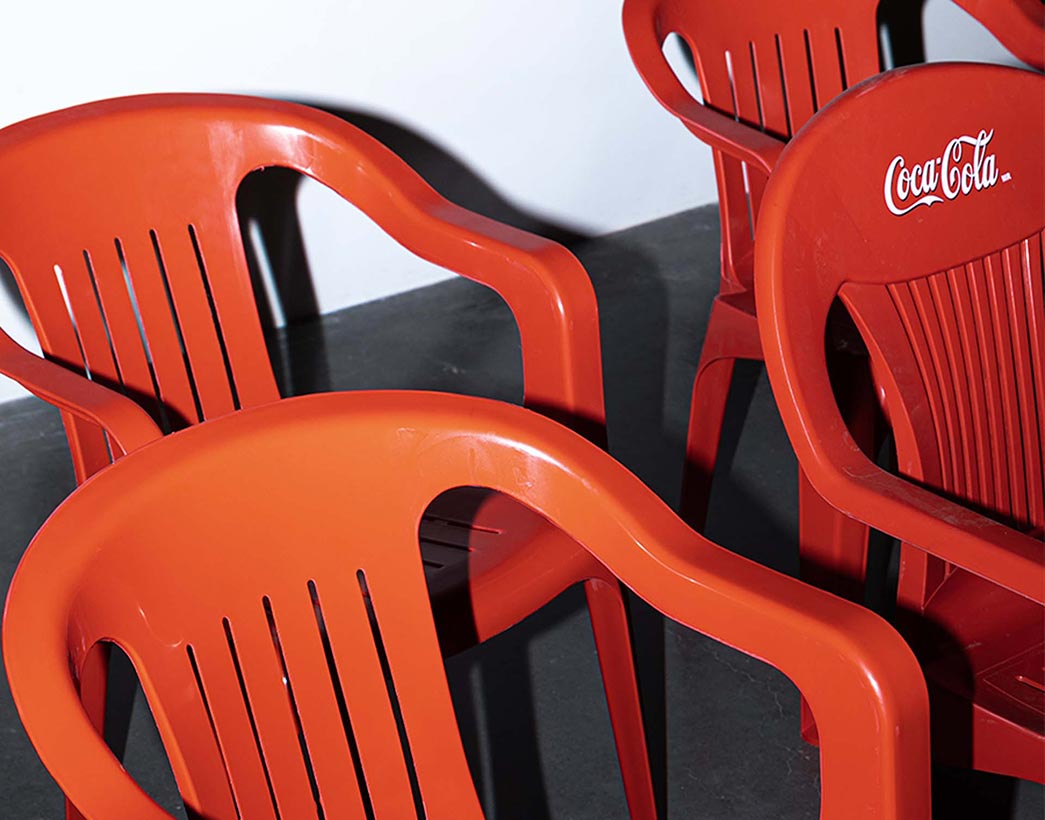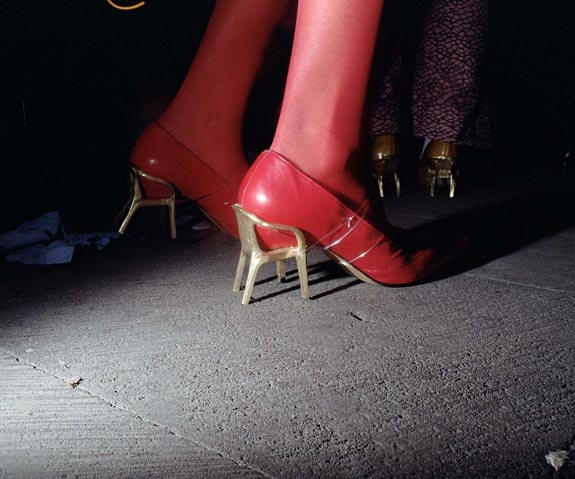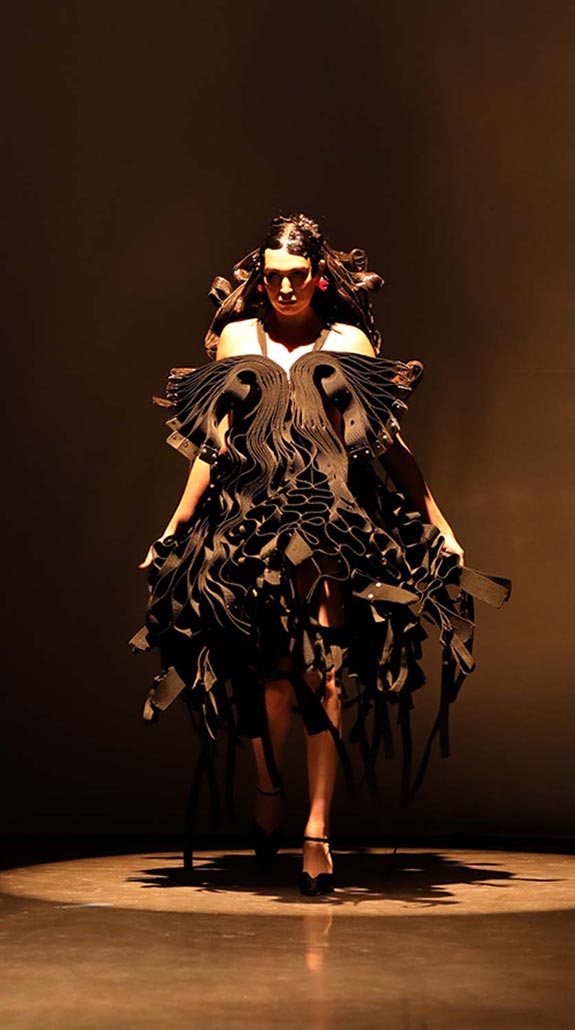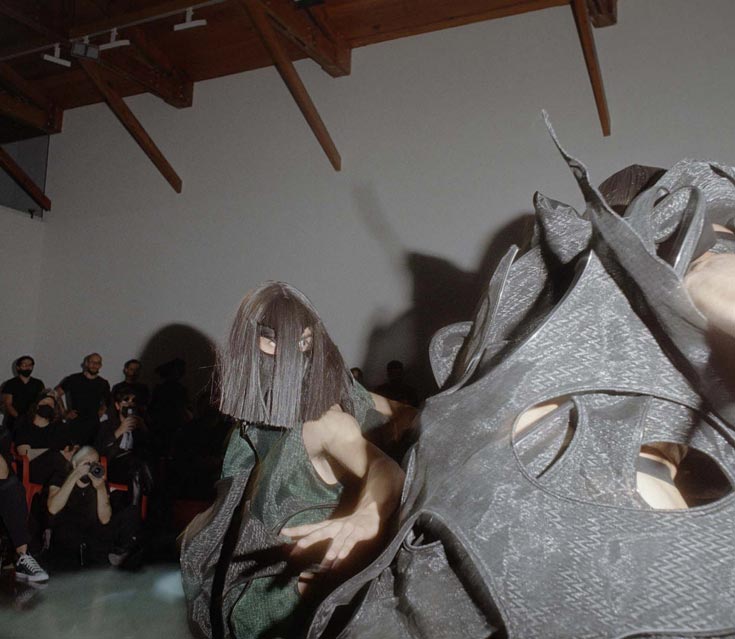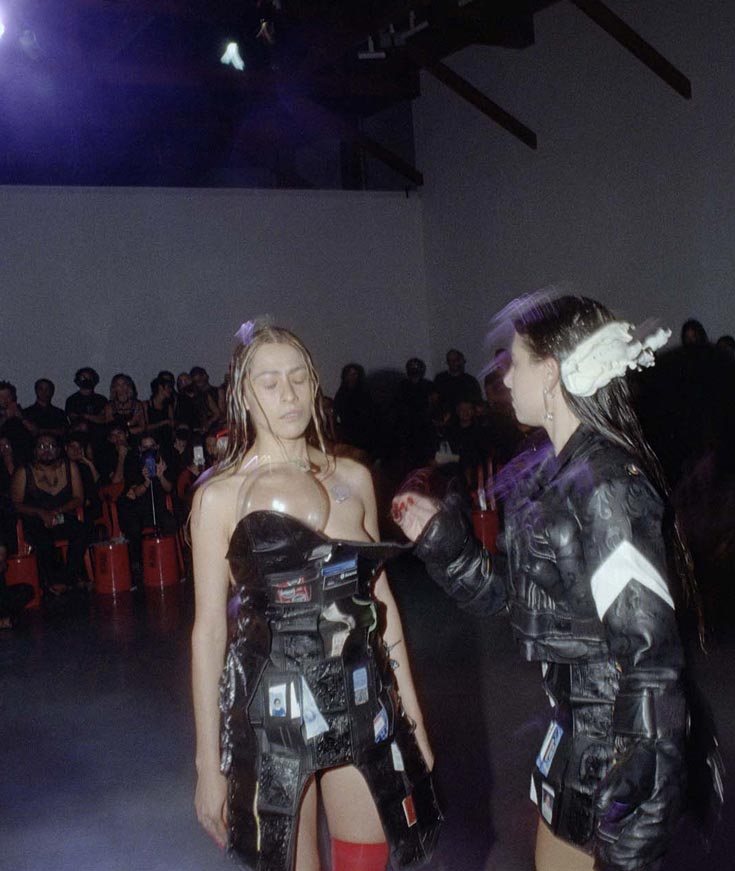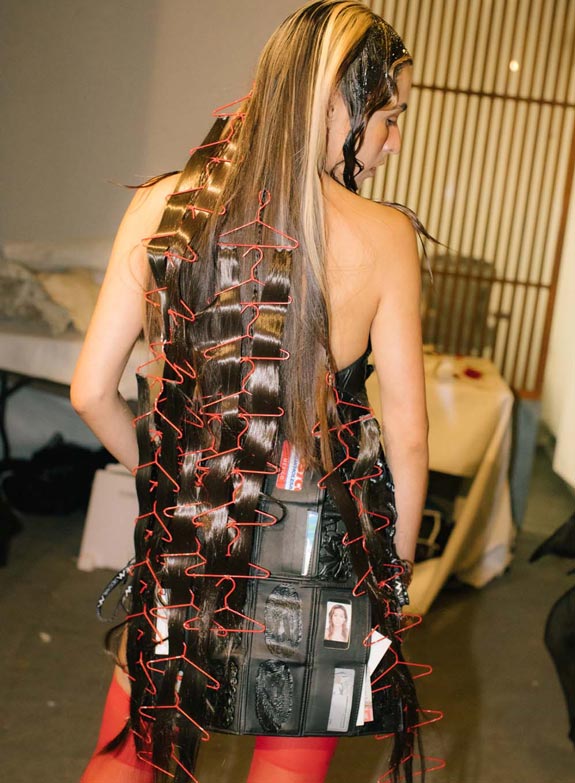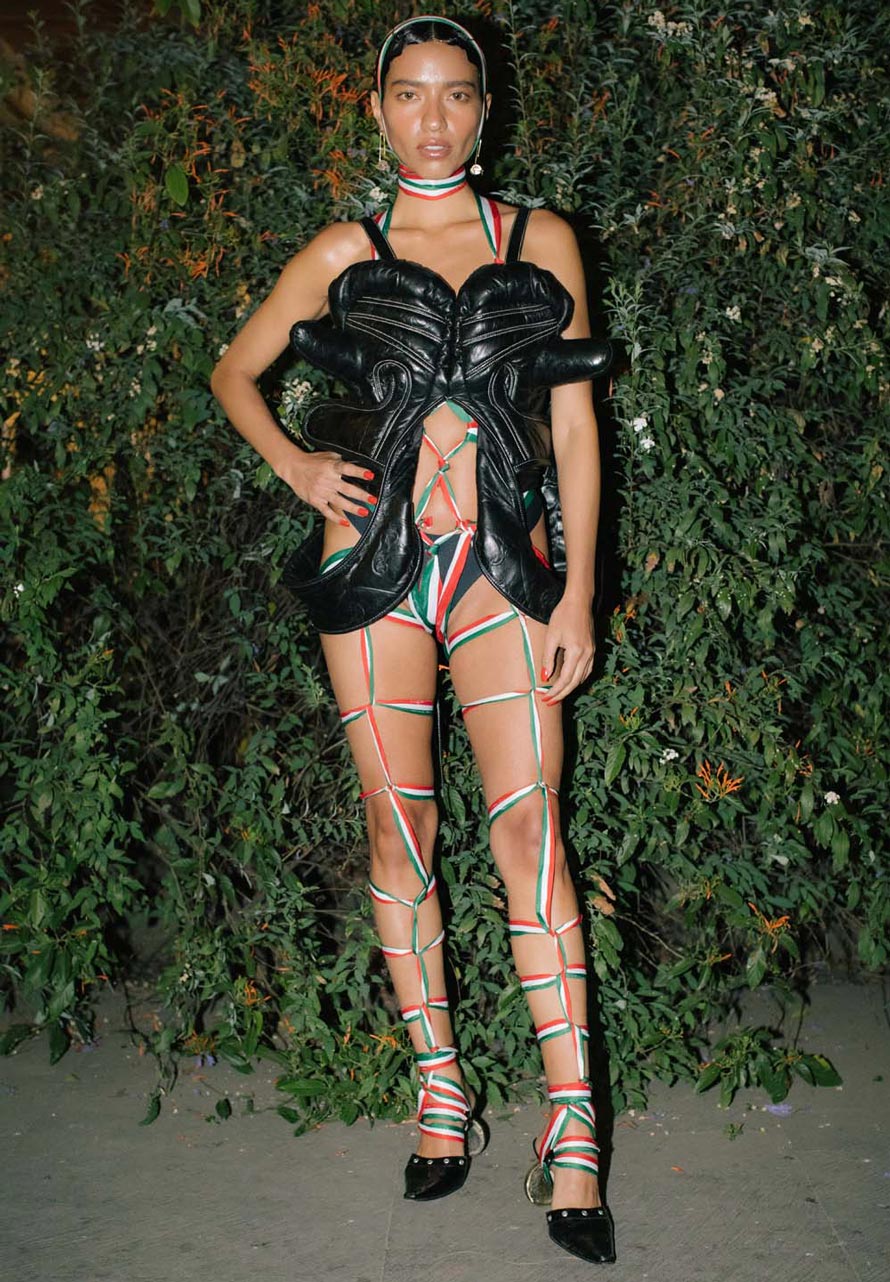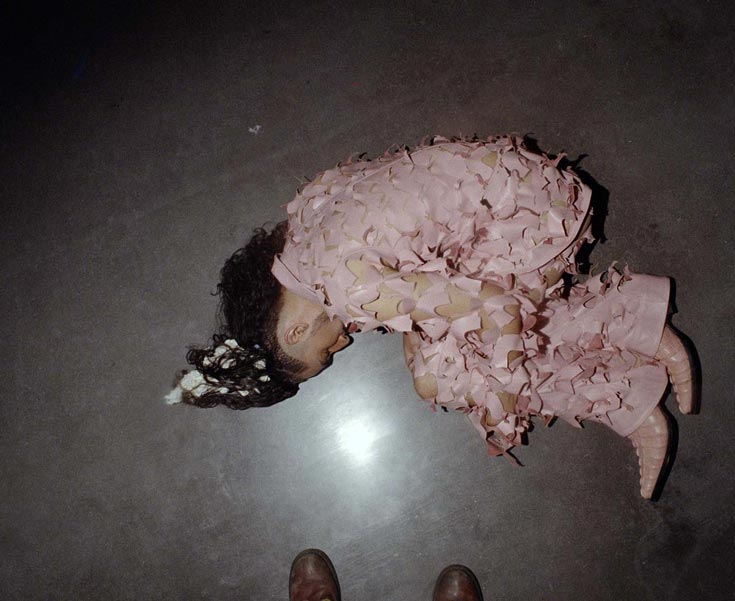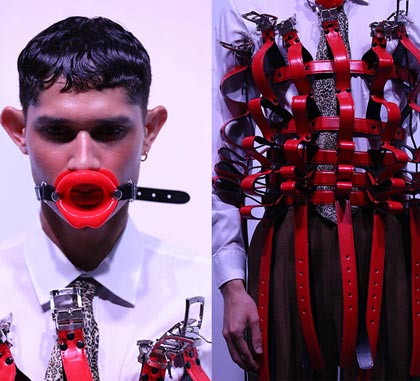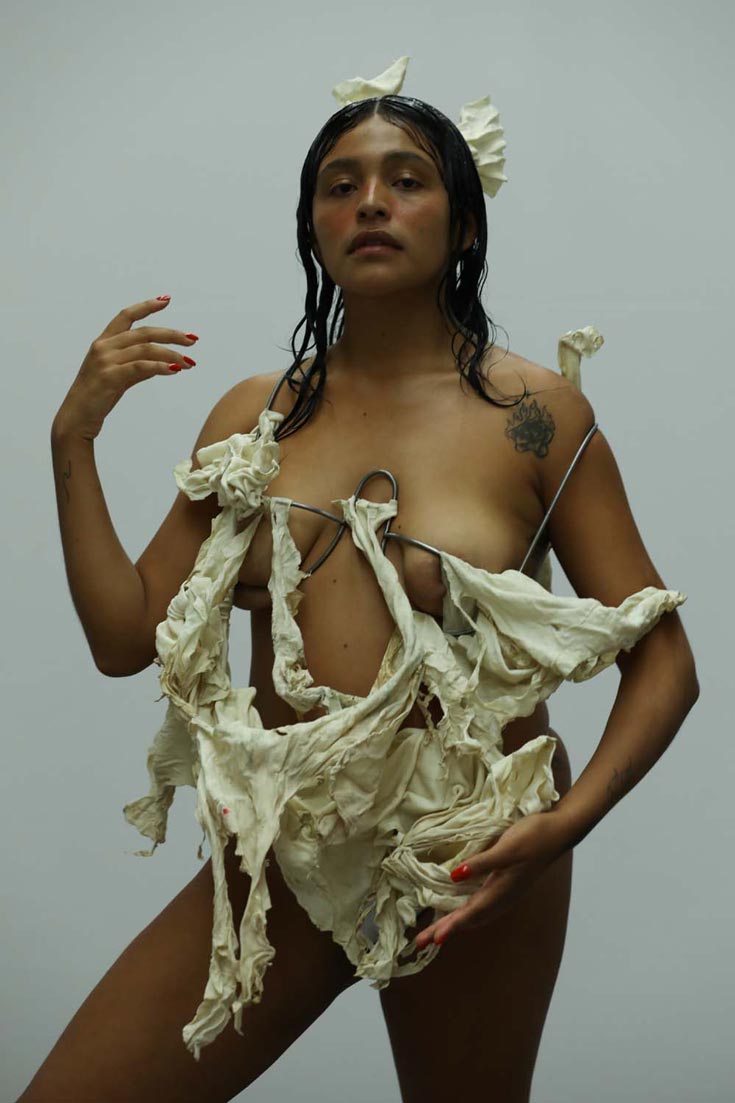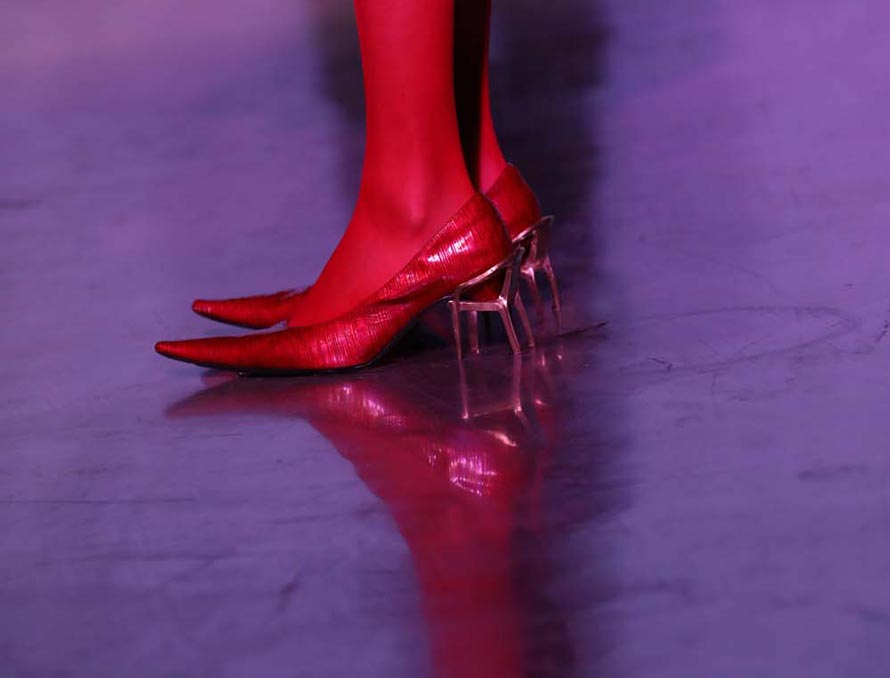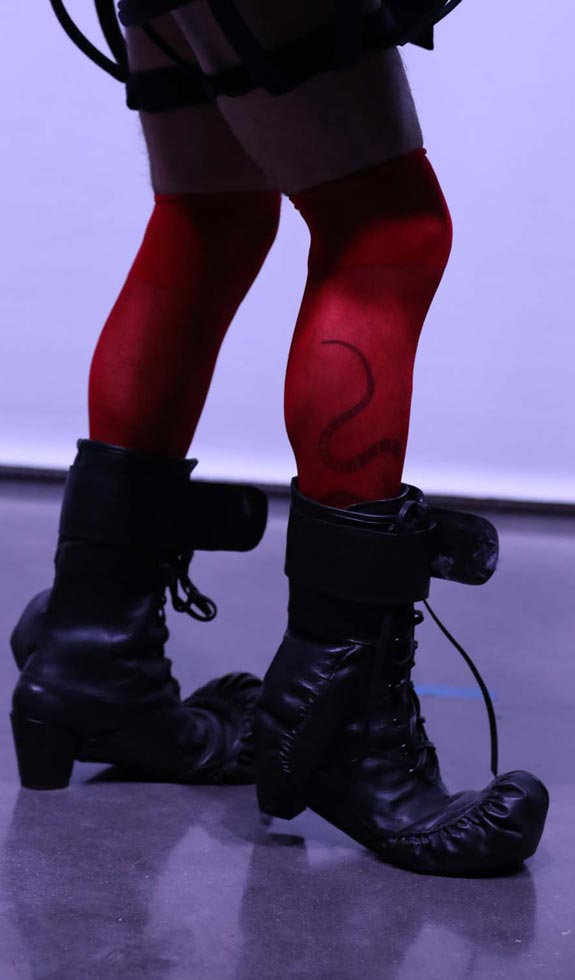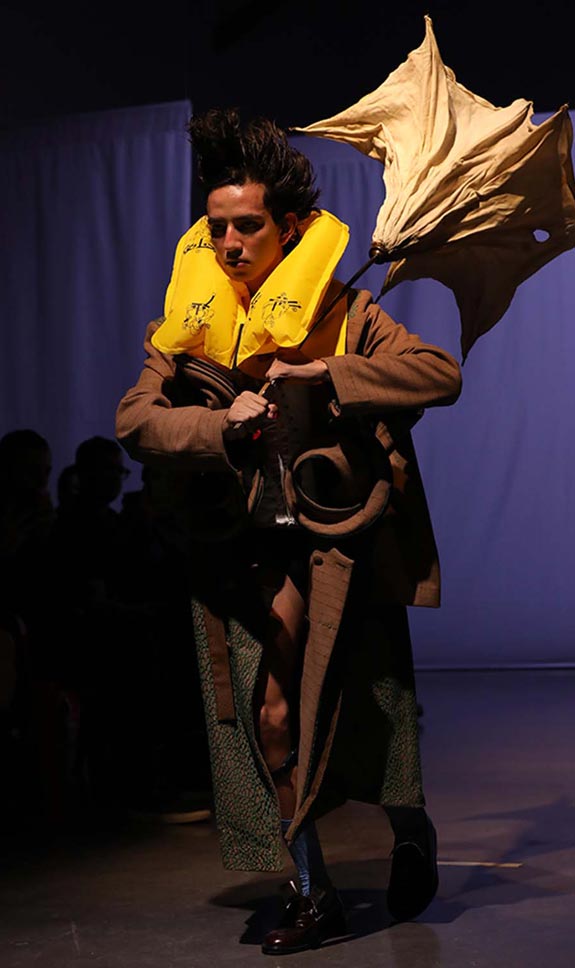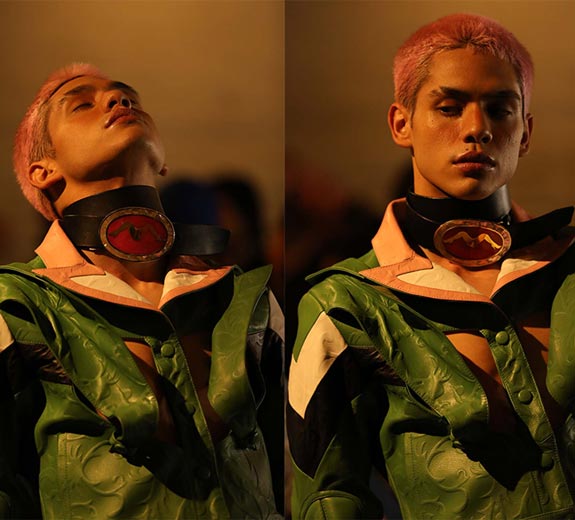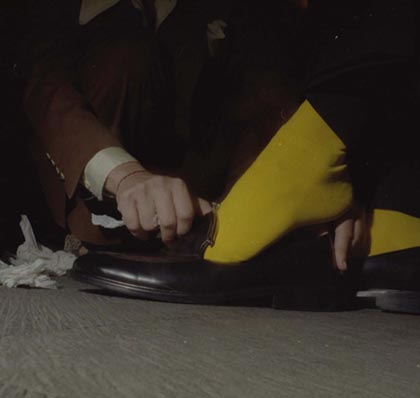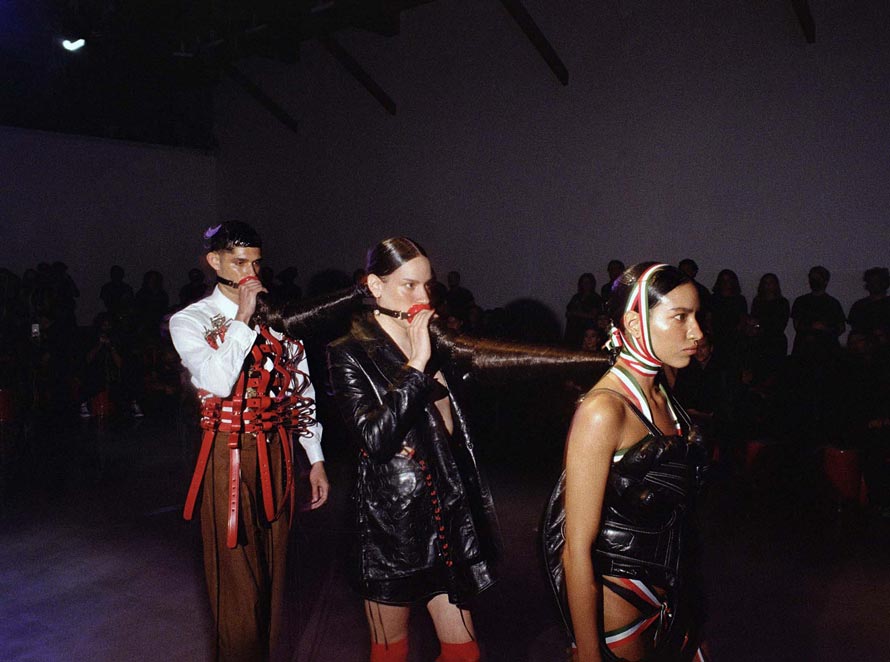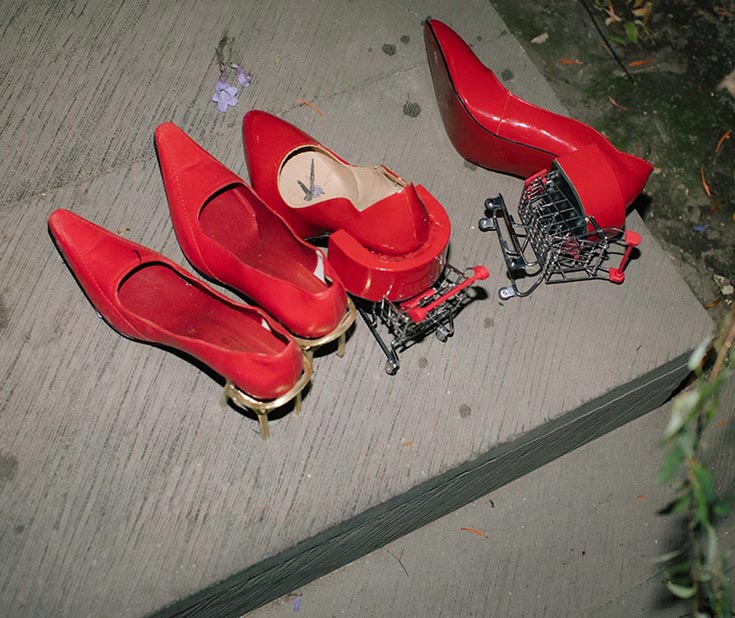This was an ambitious, multi-layered performance that sought to subvert the form of the traditional fashion runway. Consisting of 25 outfits, the collection summarized Sánchez Kane’s core preoccupations: the configuration of Mexican identity, the baroque sensibility of catholicism, the authoritarian aesthetic of the military, the pseudo-phallic kitsch of ‘tribal’ pointy boots, the logomania of state corporations, boxing gloves and buckets as prosthetics, and arum lilies as a recurring symbol of Mexican muralism. All of these elements combined on the models’ bodies to create a sort of tableau vivant of the artist’s career, with bodies that extended their human condition into the realm of sentient objects.
The contrasting interaction between bodies, plastic and rawhide —two of the main materials used in the presentation— also served as a metaphor for the current human condition in which the limits between what’s ‘artificial’ and ‘natural’ have been blurred to extremes: the buckets-as-prosthetics and the chairs the audience used were made out of the most prevalently used form of plastic, a material that can now be found coursing through our veins and organs. Our waste has invaded our bodies in a non-symbiotic relationship in which the roles of the parasite and the host are constantly confused.
These ideas of bodily cycles, the agency of materials and the fuzzy boundaries of humanness, were also essential to the elaborate metaphors in the show. The entire space was darkened and the audience asked to wear black only, while the stage itself was red with Sánchez Kane’s spread legs logo featured prominently: a gallery turned into a massive womb. Two nymphs, dressed in rawhide lingerie, functioned as hostesses, but also maternal figures pushing the narrative forward to its eventual climax, where a falsetto opera singer appeared to close the show. The nymphs were their unlikely mothers, framing him and caressing him as he performed, white buckets growing out of his body. A drone carrying an arum lily appeared suddenly, a near-sentient object highlighting again the crossover between the natural and the technological, the artist poetically caught it mid air at the very end.
In its very name Sánchez Kaneismo proposed itself as a provocation: by turning her name into an ‘ism’, Sánchez Kane emphasized the parallels between the ways in which these convenient labels work in art history and in the fashion market. For an ism to come to life, a recognizable visual trend must be identified, repetition is necessary as much as it is for a fashion brand. Sánchez Kaneismo was all about the dismantling of easy categories, advocating instead for the permanent blurring of supposedly antagonistic categories such as plastic/human, organic/inorganic, machismo/sentimentality, men/women.


